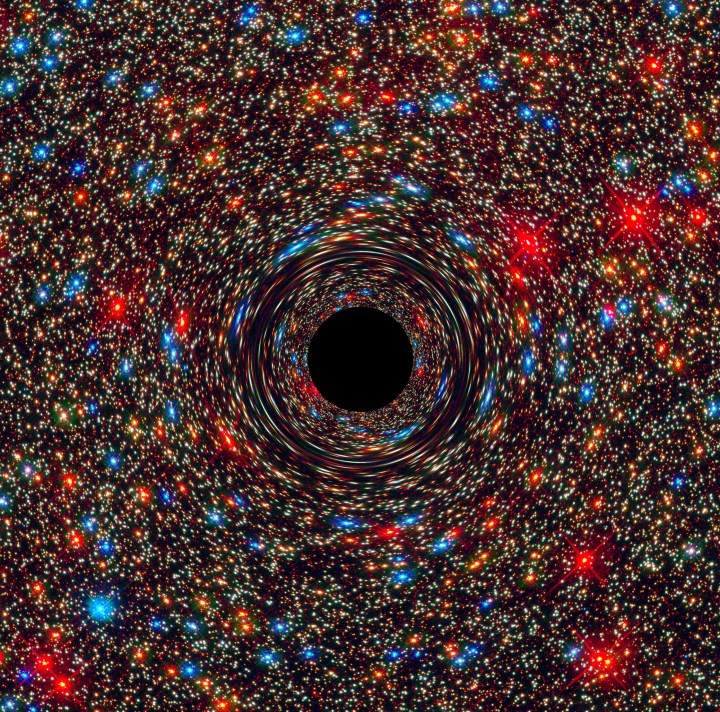
If the idea of a black hole millions of times the mass of our sun makes you uncomfortable then we have bad news: Researchers have predicted that black holes could grow even larger than previously thought, reaching masses of hundreds of billions of times the mass of the sun. These aren’t merely supermassive black holes — they’re stupendously large black holes.
The biggest black holes discovered to date are the monsters that lie at the heart of galaxies, called supermassive black holes (SMBHs). These include Sagittarius A*, the black hole at the center of the Milky Way which is a relatively modest four million solar masses, and the famous black hole at the heart of Messier 87 which was imaged in 2019 and which has a mass of 6.5 million solar masses.
These SMBHs range in size up to 60 billion solar masses, which is the largest we currently know of. It was previously thought that this was around the upper limit on how large a black hole could get, as it is very hard for them to grow larger than this due to the limitations of the disk of matter around them, called the accretion disk.
But the new research questions this upper limit, by suggesting that even bigger stupendously large black holes (SLABs) could have formed in the early universe. These “primordial” SLABs wouldn’t form from the collapse of a massive star, like most black holes do, but would have been born even before galaxies started to form. That would let them be a range of sizes, up to billions of solar masses.
“We already know that black holes exist over a vast range of masses, with an SMBH of four million solar masses residing at the center of our own galaxy,” explained lead author Bernard Carr in a statement. “Whilst there isn’t currently evidence for the existence of SLABs, it’s conceivable that they could exist and they might also reside outside galaxies in intergalactic space, with interesting observational consequences. However, surprisingly, the idea of SLABs has largely been neglected until now.”
The researchers hope that this theory could propel research into SLABs, which could even be related to dark matter. Dark matter may have formed in the early universe, so learning about primordial black holes which also formed at this time could help unpick this puzzle.
The research is published in the journal Monthly Notices of the Royal Astronomical Society.
Editors' Recommendations
- Biggest stellar black hole to date discovered in our galaxy
- Nightmare black hole is the brightest object in the universe
- Record-breaking supermassive black hole is oldest even seen in X-rays
- Swift Observatory spots a black hole snacking on a nearby star
- Astronomers just spotted the largest cosmic explosion ever seen




